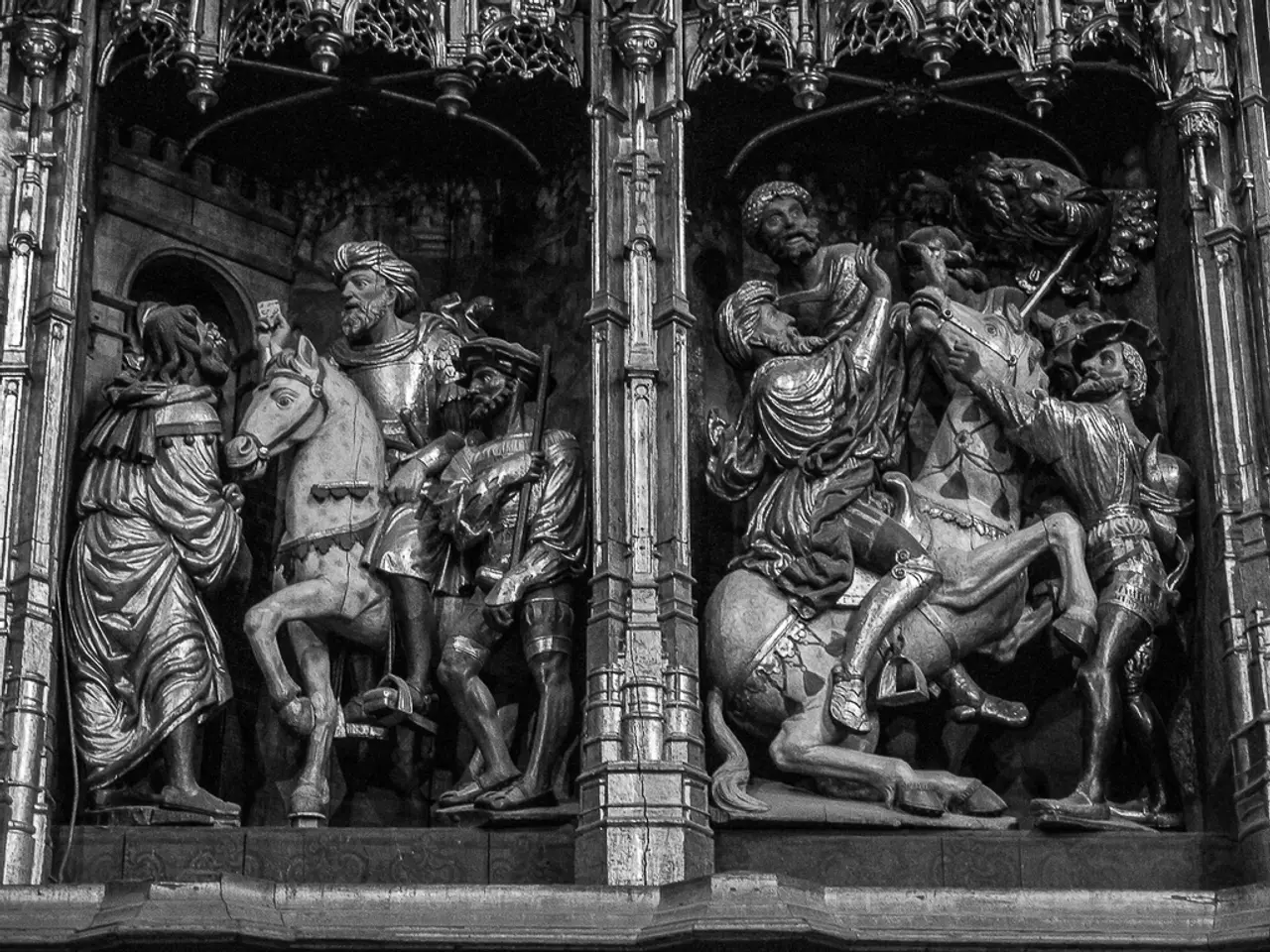Notable Sculptures Crafted by Henry Moore
Henry Moore: A British Sculptor Shaping the 20th Century
Henry Moore, a renowned British sculptor, made pioneering contributions to modern art that have left a lasting impact on contemporary sculpture. His work transcends borders, affirming his role as one of the 20th century's most influential artists.
Moore's philosophy emphasized accessibility, aiming to make art an integral part of public spaces. He challenged the notion of art confined to galleries, believing that it should be accessible to all. This approach is evident in his distinctive style, which features organic, abstract forms that often explore the human figure and natural elements.
One of Moore's most notable works is the "Working Model for Sheep Piece" (1971), an abstract sculpture that delves into animal forms crafted in bronze. Another notable piece is the "Stringed Figure" (1937), an abstract bronze sculpture that embodies Moore's innovative approach with a blend of organic and abstract elements, capturing a sense of fluidity and movement.
Moore's sculptures often emphasize the interplay between solid and void, as well as the form's contour. This is evident in works like the "Draped Seated Woman" (1957-58), a bronze sculpture that elegantly captures the interplay between the human body and its surrounding environment.
The Reclining Figure series, spanning from the 1930s to the 1980s, is a testament to Moore's mastery in sculpting the human form. This series, along with the Mother and Child series, focuses on timeless themes such as protection, nurturing, and the fundamental human connection.
Moore's sculptures, such as "Helmet Head and Shoulders" (1950) and "Large Two Forms" (1966), often embrace the interplay of space and mass. Works like "The Arch" (1963-69) invite viewers to walk through and experience the sculpture's space.
Moore's work encompasses a wide range of materials, from bronze to stone. His sculptures can primarily be seen in museums and other public collections across Germany, where they have been exhibited in thematic group exhibitions at institutions like the Käthe-Kollwitz-Museum Köln and Berlin. These exhibitions often showcase his work alongside artists such as Goya, Ernst Barlach, Otto Dix, and Picasso.
Today, Moore's sculptures continue to influence contemporary sculpture worldwide, affirming his position as one of the most significant figures in modern art.





